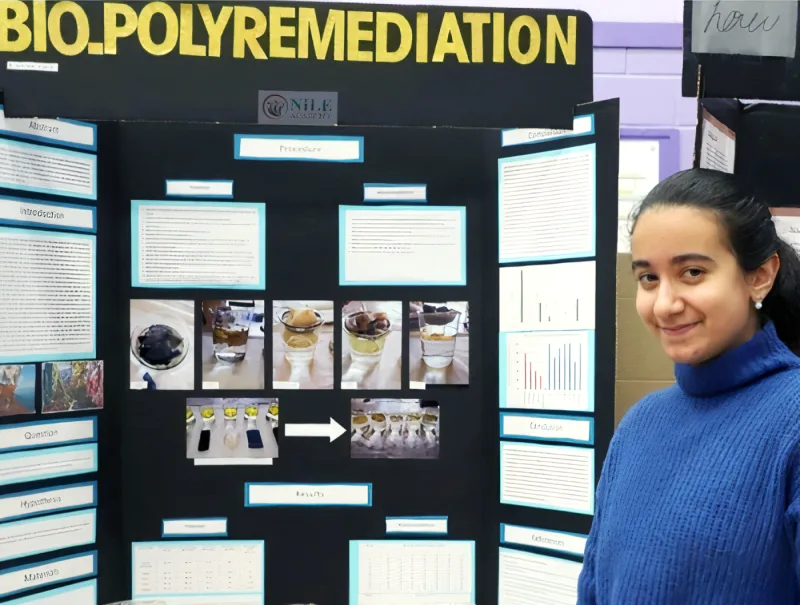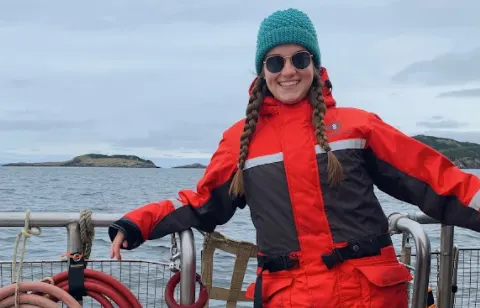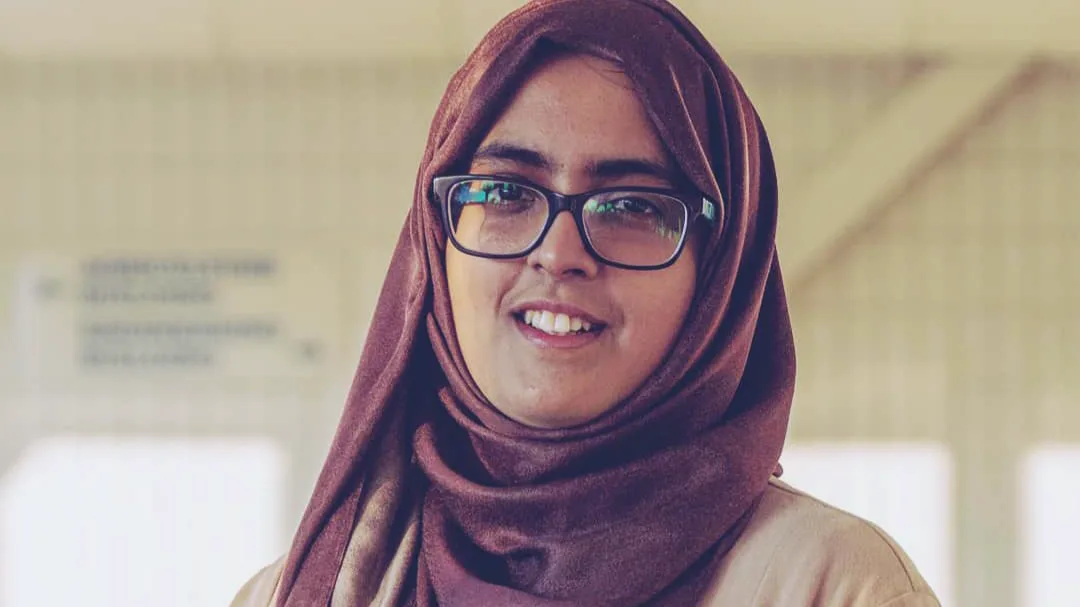
Three inspiring stories from young women making a mark on climate change
The Weather Network spoke to three young environmentalists looking to change the world with their research in February. Here they are once again as we celebrate International Women’s Day.
Who runs the world? Well, according to Beyoncé, it’s girls.
That type of woman empowerment message is also at the core of International Day of Women and Girls in Science, which was declared by the United Nations General Assembly in 2015.
“A significant gender gap has persisted throughout the years at all levels of science, technology, engineering, and mathematics (STEM) disciplines all over the world,” reads the UN website about the international day marked in February. “Even though women have made tremendous progress towards increasing their participation in higher education, they are still under-represented in these fields.”
But more women and girls are getting involved in the sciences every day.
Below are the stories of three young women recently featured in Starfish Canada’s Top 25 environmentalists under 25. Find out why they decided to pursue environmental sciences, and what they want future generations to keep in mind.
CURIOUS ABOUT OCEANS
Meet Melanie Downer. The 21-year-old got her start in environmental conservation by simply being a curious kid from St. John’s, Nfld.
She wanted to know “why we know the things we know” when it came to the beautiful ocean life on display near her home — saying we know more about Mars than the bottom of the ocean in many regards.

Melanie Downer is one of three young women with a research background that we spoke to about International Day of Women and Girls in Science in February. (Melanie Downer)
Downer remembers when the federal government banned cod fishing along Canada's east coast back in 1992, and how it impacted her community.
“We’re right on the coast and a lot of our economy and tourism and things like that are reliant on the environment and the ocean,” she told The Weather Network.
“Unfortunately, maybe, if we were a little bit more respectful of the ocean resources we could have avoided something like that.”
It inspired her to ask the question: how can we be more sustainable when it comes to our oceans?
That led her to Memorial University where she is researching her undergraduate honours thesis on microplastic pollution in ocean sentiments.
She hopes to graduate this April before going to graduate school and seeking some international experience.
“We’re not going to be able to combat climate change if we’re all working individually and there’s no communication internationally,” Downer said.
Before she spreads her wings, Downer is also spearheading the Ocean Bridge Ambassador Program — a rural community initiative just outside of St. John’s where people can learn about the ocean and what lurks under the surface.
Downer says her past experience — including work with Women and Science Engineering Newfoundland — helped increase her confidence to enter into the field of ocean conservation.
“I think a lot of the time, and I am included in this, women kind of under qualify themselves,” she said. “It’s really important to encourage women to be curious, ask those questions, step up and vouch for yourself. You’re just as worthy to be in those rooms as anyone else.”
And not just women and girls, but all Canadians. She hopes to inspire people to do something about the big issue of climate change, even on an individual level such as beach cleanups, reducing carbon consumption or finding why oceans are so important to our world.
“If a bunch of individuals do a few small steps it will snowball and it will make a difference overall,” Downer said.
SEEKING SMART ENERGY
Meet Samia Sami. The 24-year-old’s interest in sustainability was sparked by travelling and living in both developed and developing countries while striving to be a guardian of the Earth as part of her faith.
That led her to conduct projects on artificial intelligence in renewable energy during her post-secondary studies in engineering at the University of Saskatchewan. For example, researching the security status of renewable microgrids in remote communities across Canada and developing a machine learning-based framework that predicts the energy generation of solar panels and load profiles of prosumers in distribution systems.

Samia Sami is hoping her work with SaskPower will help make energy grids around Canada more resilient as renewable energy options become more common. (Samia Sami)
Sami hopes her work will assist policymakers and electric utilities in making risk-informed decisions that ensure the supply of electricity to Canadian households and businesses remains uninterrupted.
“I view artificial intelligence (AI) as one of the most innovative and influential trends in addressing environmental sustainability. AI is enabling utilities to effectively integrate renewable energy into the electric grid,” she said. “We know renewable energy sources, such as wind and solar, are unpredictable and highly variable. This makes it very hard to use these sources without proper deployment of electricity demand and supply forecasting techniques. AI is enabling electric grids to become smart.”
Sami explained that there are many benefits of a smart electric grid, like enabling optimized charging schedules for electric vehicles. She said AI provides highly accurate results for analyzing energy use in buildings and homes, reducing waste generation in production facilities, alerting the public about pollution levels, and mapping out efficient transportation routes.
“As the pace of change in the AI industry accelerates, a paradigm shift in environmental sustainability is emerging,” she said.
Sami recently started working at SaskPower, the principal electric utility in Saskatchewan, but also serves on the board directors of Starfish Canada as they celebrate young environmental leaders in her spare time.
Sami hopes her work will help shape further integration of renewable energy, and was able to share her research at the Women in Science and Engineering National Conference — where she met other professionals and students who share similar interests.
“There were lots of discussions and questions regarding the feasibility of renewable energy after my presentation, which was my favourite part. It allowed me to clarify some of the confusions that the public has regarding renewable energy.”
Her advice for young girls would be to “approach your education with the mindset of a comprehensive experience that will assist you in growing as a person, amplifying your ideas, and developing your technical and soft skills.”
Sami wants to encourage Canadians to leave the world better than they found it while acknowledging we have “much more in common than we have in difference.” Her actionable advice is to write letters to local MPs and MLAs urging them to implement renewable energy policies and contacting your electric utility to learn about the available renewable energy options (or asking for them if they don’t have any).
“Remember that no change is too small. Every change starts from within us and then ripples across our family and friends, peers and colleagues, school and university, community, city, province, country, and the world,” Sami said.
SCIENCE FOR THE WIN
Meet Sarah Syed. The 17-year-old always considered nature to be her best friend growing up. She spent countless hours outdoors, but it wasn’t until a Grade 4 assignment on climate change that got her thinking.
“At that age, I knew what the term meant but didn’t fully understand the long-lasting detrimental impacts climate change has on the environment,” she said.

Sarah Syed has volunteered with many environmental organizations and even founded her own called You Are the Change to raise money for schools in a greener future. (Sarah Syed)
Syed later participated in her school’s robotics club because she loves STEM, even though there were only four girls involved, and founded her school's environmental club and You Are the Change — an organization raising funds to build schools in Africa with green technology.
Now in Grade 12, Syed says it’s never too late to start impacting your community or chasing after your dreams.
“Your actions define you, not your age or gender. It is crucial that in a world where a STEM pursued field is often male-dominated that young girls and women work together to pursue their passions.”
Sharing that passion with youth led her to hold an environmental-themed hackathon to encourage youth to solve real-world problems.
“We successfully had over 80 projects designed during the hackathon and all awesome ideas were contributing to the future of climate tech,” Syed said.
One of her very own ideas came from her love of chemistry. She learned about polymers in her Grade 10 science class, and went down a bit of a rabbit hole after reading an article about how clothing and textiles contribute to climate change.
“Understanding synthetic polymer's properties after further research, I wanted to apply it to a global problem and so I chose hydrocarbon spills in our oceans,” Syed said.
It led her to design a prototype model that uses commonly thrown out synthetic polymers encased in a nylon mesh to remove up to 80 per cent of surface spilled oil in our oceans to reduce the impact on wildlife. She also conducted a research project on bioplastics made from food scraps after learning how many animals die after ingesting small pieces of plastic.
Currently Syed is an innovator at The Knowledge Society, which is a human-accelerator program for youth that want to create a positive change in the world around them, and is working on designing a semi-transparent solar cell that would have a higher efficiency than leading solar cells. Syed hopes to study biochemistry in university next year while continuing to volunteer at environmental organizations and expanding her You Are the Change organization.
“We have many resources that we should be shifting our focus towards to solve this global issue [of climate change], such as exponential technologies to innovate solutions in the fields of nanotechnology, alternative energy, cellular agriculture, or fusion energy to name a few.”
Syed says science is not only her passion but her way to advocate for a sustainable future.
“To the youth who work in the field of science, don’t be afraid to reach out to industry leaders, for example the CEO of a company working on bioplastics, to get advice on your project or research. You can learn so much from people who have first-hand experience in a certain industry.”
Thumbnail credit: Sarah Syed












